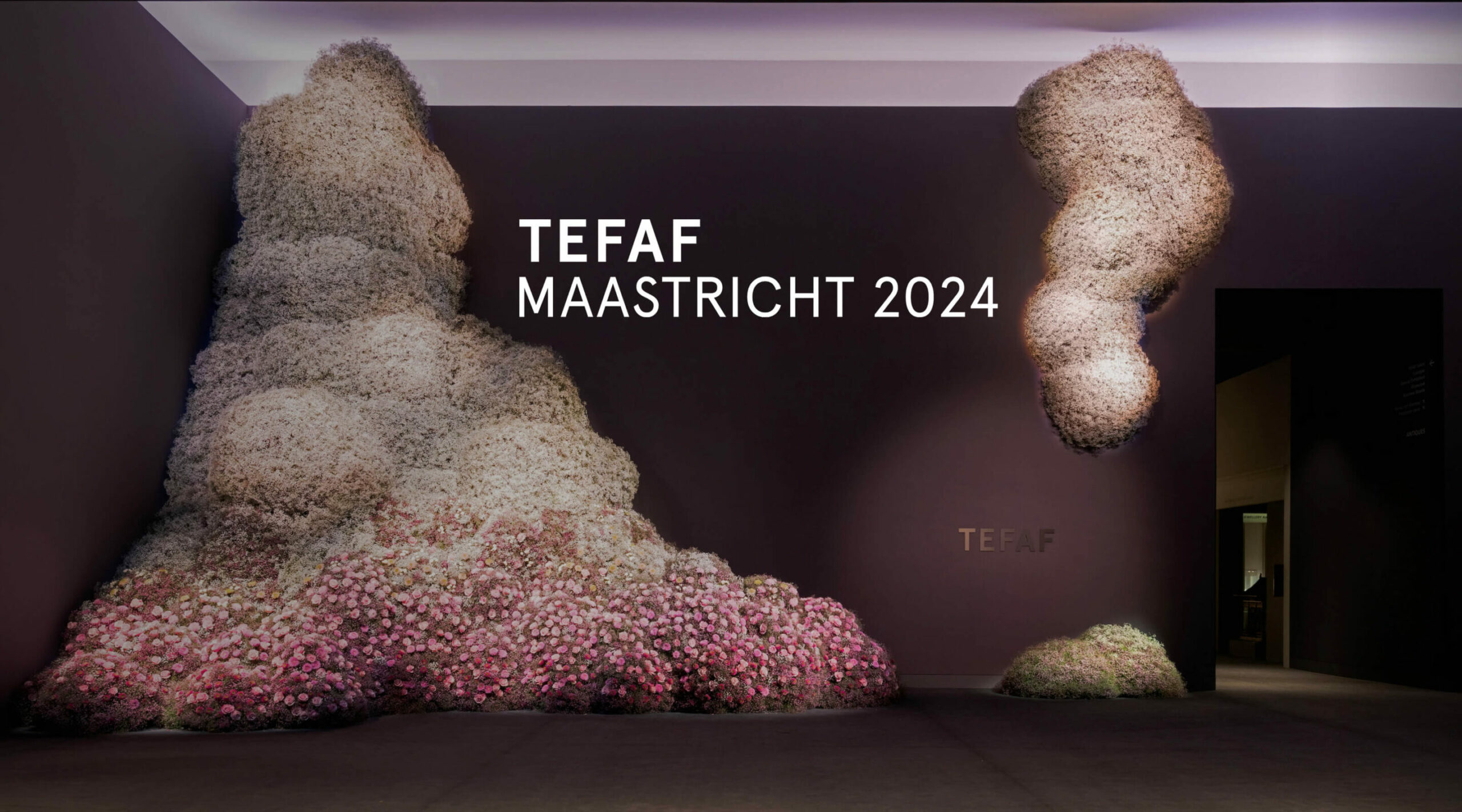
MARCH 9 – MARCH 14, 2024
We are delighted to be participating in TEFAF 2024 for our third year at the fair. For this very special occasion, we are showing several new works in terracotta and plaster, as well as bronzes rigorously selected for their exceptional quality of casting and patina. The gallery cannot overlook its favorite artist, Antoine-Louis Barye, who once again astonishes us with his talent in Theseus fighting the Minotaur (second version) (1857); the sculptor’s tour de force was to infuse this ancient grandeur into a group of modest proportions. Auguste Rodin is also present with The Eternal Springtime, Second State, Second Reduction also known as « size 4 », a generously scaled Barbedienne bronze cast during the artist’s lifetime. The beauty of this sculptural masterpiece lies in its ability to express erotic love, as the two figures literally melt into each other. Rodin’s friend, Alexandre Falguière, pays tribute to him with an imposing Bust of Auguste Rodin (1899), that recalls the extraordinary strength and sentiment of Camille Claudel’s Portrait of Rodin. Of the same generation, we should mention Jules Desbois and his original unsigned plaster still in its original oak frame, Eve. As always with the artist, the female figure is sublimated, fluid and ethereal. From plaster to terracotta, there is only one step that I am happy to take, to unveil two original terracottas by Dalou, both real discoveries. Since the sculptor usually destroyed his sketches either because of his exacting standards or out of anger, it is fortunate that they have come down to us in such a fresh condition. They are Charity (circa 1877) and Madonna and Child with St. John the Baptist, also known as Madonna Sitting with Two Children (circa 1874). Both date from the sculptor’s English exile (1871-1879) and are preparatory works for a public fountain commissioned by the City of London. Inspired by scenes he observed in his home, Dalou had models pose for him – young women, babies and children – and made multiple studies to achieve the right gesture, that of the most moving of relationships between mother and child. These marvellous sketches ideally reflect the sculptural process, from first idea to finished work. Frédéric-Auguste Bartholdi‘s Monument to the Airships of the Siège of Paris (1879), commissioned by the City of Paris in 1879, is of a completely different nature. All that remains of this monument is the model (H. 22 ¾ inches) in the Musée de l’Air et de l’Espace at Le Bourget (Inv. 11012) and a bronze and onyx version in the Musée Bartholdi in Colmar, a reproduction of the original sketch. Our bronze is a rare and moving testimony to this important chapter in the Conquest of the Air. Let us turn now to Emmanuel Frémiet, doubly represented here: firstly, with an original polychrome terracotta Saint Martin Dividing his cloack, related to the religious revival around Saint Martin in France in the first half of the 19th century. Next, we find him portrayed in a charming plaster statuette by his pupil Henri Désiré Léon Greber. This work is interesting in more ways than one: nicely dedicated, it relates to the 1903 Salon sculpture Portrait of the Master Frémiet (1903) (marble, Musée d’Orsay), which was created using photography, making it a rare example of the relationship between sculpture and this technique, which had until then been used principally in painting. Animal figures are of course represented by renowned artists: Guyot, Lémar, Trémont, Pompon… How could we fail to mention the beautiful Seated Lioness by Guyot, a rare and impressively large model, undoubtedly the sculptor’s masterpiece of this subject. It has an incredible presence, as does the Chimpanzee by Trémont, proudly striding forward. More delicate is Pompon’s Crowned Crane at Rest (striated crown) (1926). The wader’s silhouette is pared down to the strength of its outline, while at the same time emphasizing its distinctive features. Of exceptional casting quality, our example is extremely rare, as very few proofs of the model were made during François Pompon’s lifetime. Here, then, is a brief overview of our selection of nineteenth and twentieth-century sculptures, which I hope will surprise collectors and curators attending this prestigious fair. Welcome to our stand!
Nicolas Bourriaud
